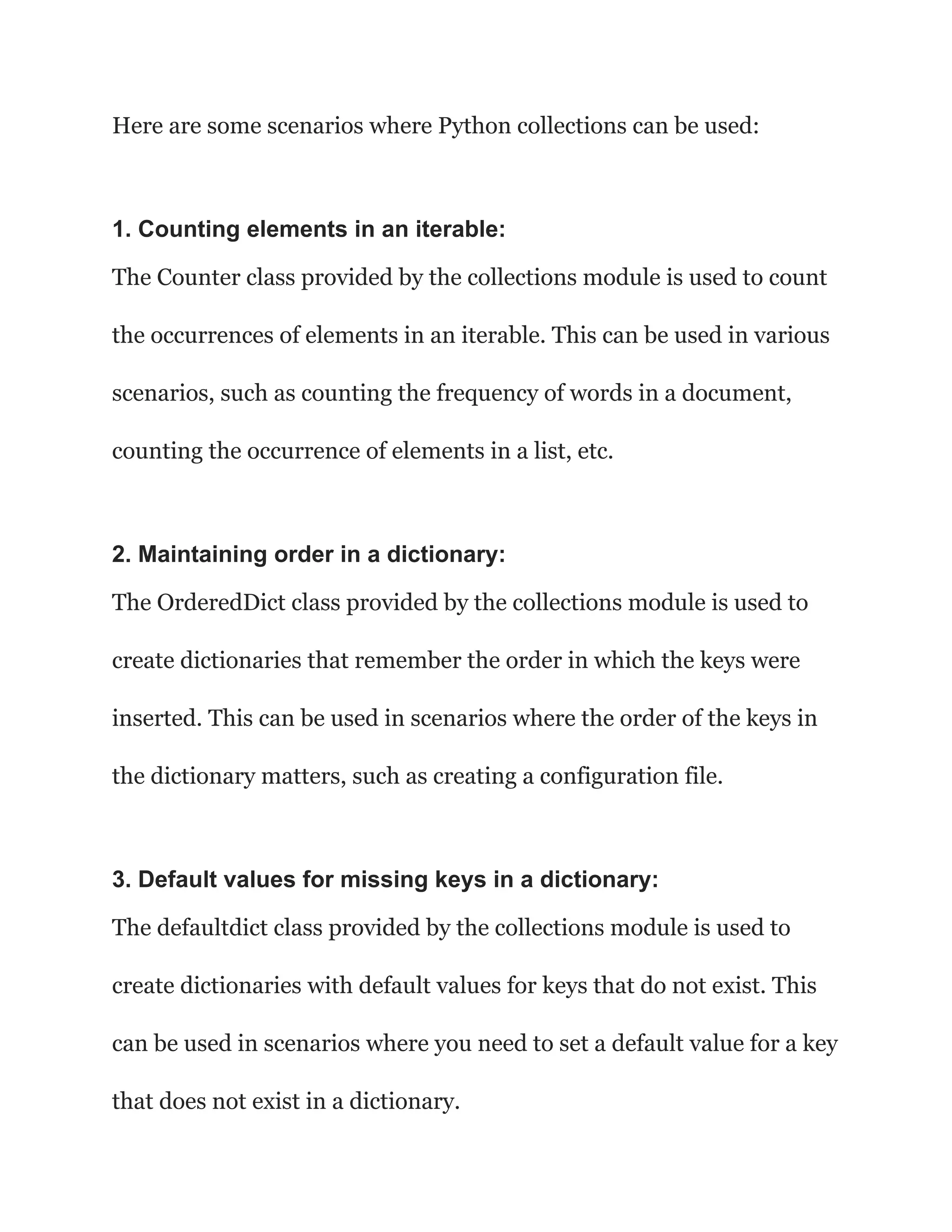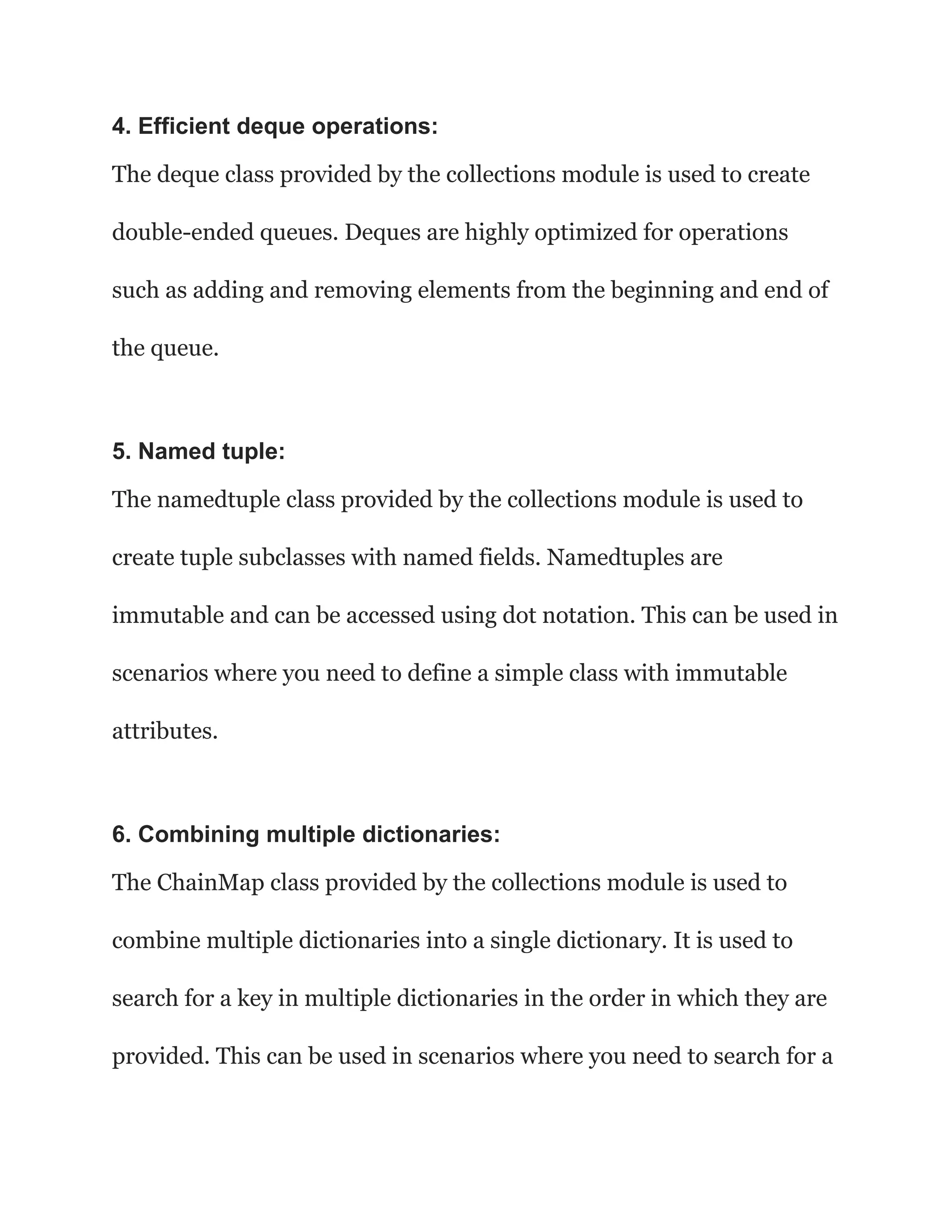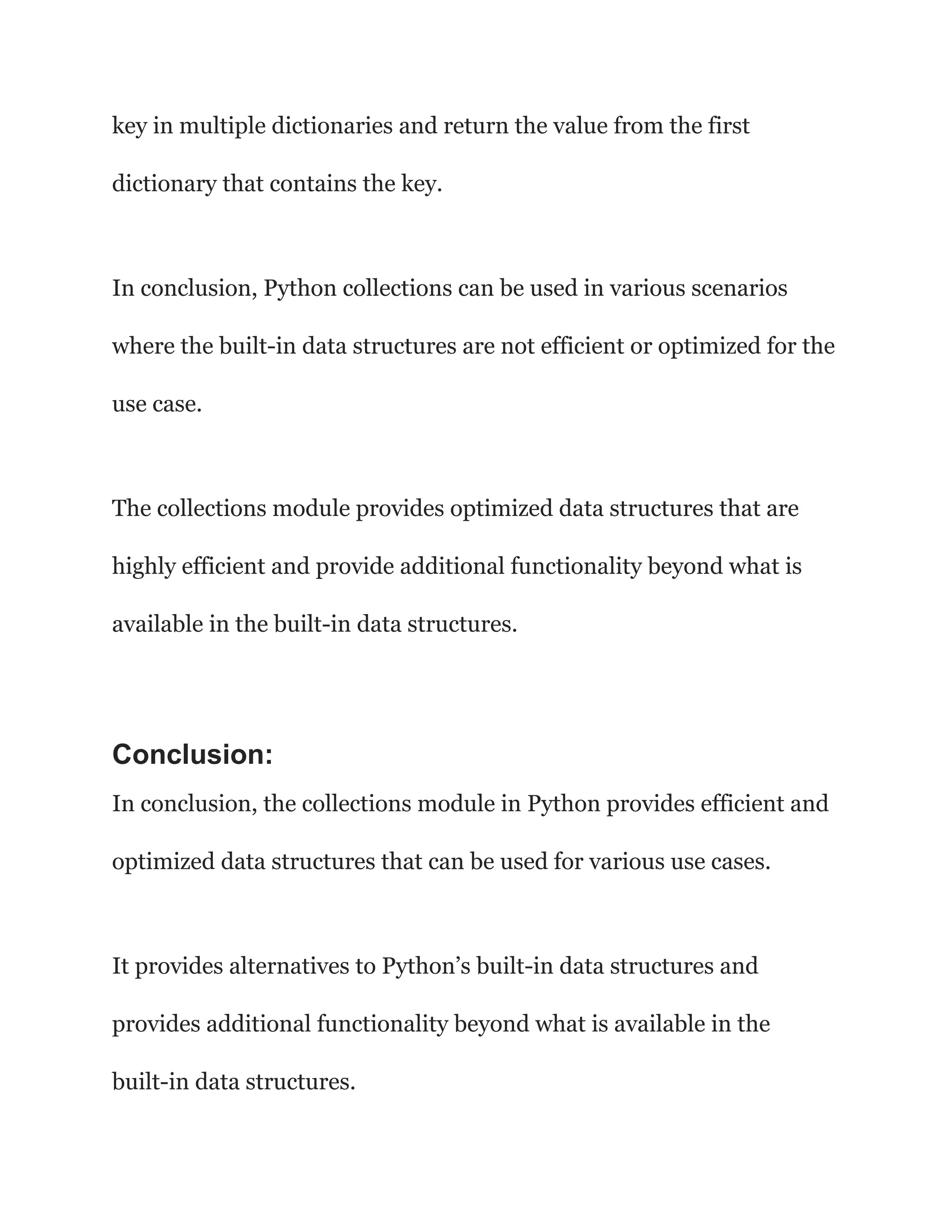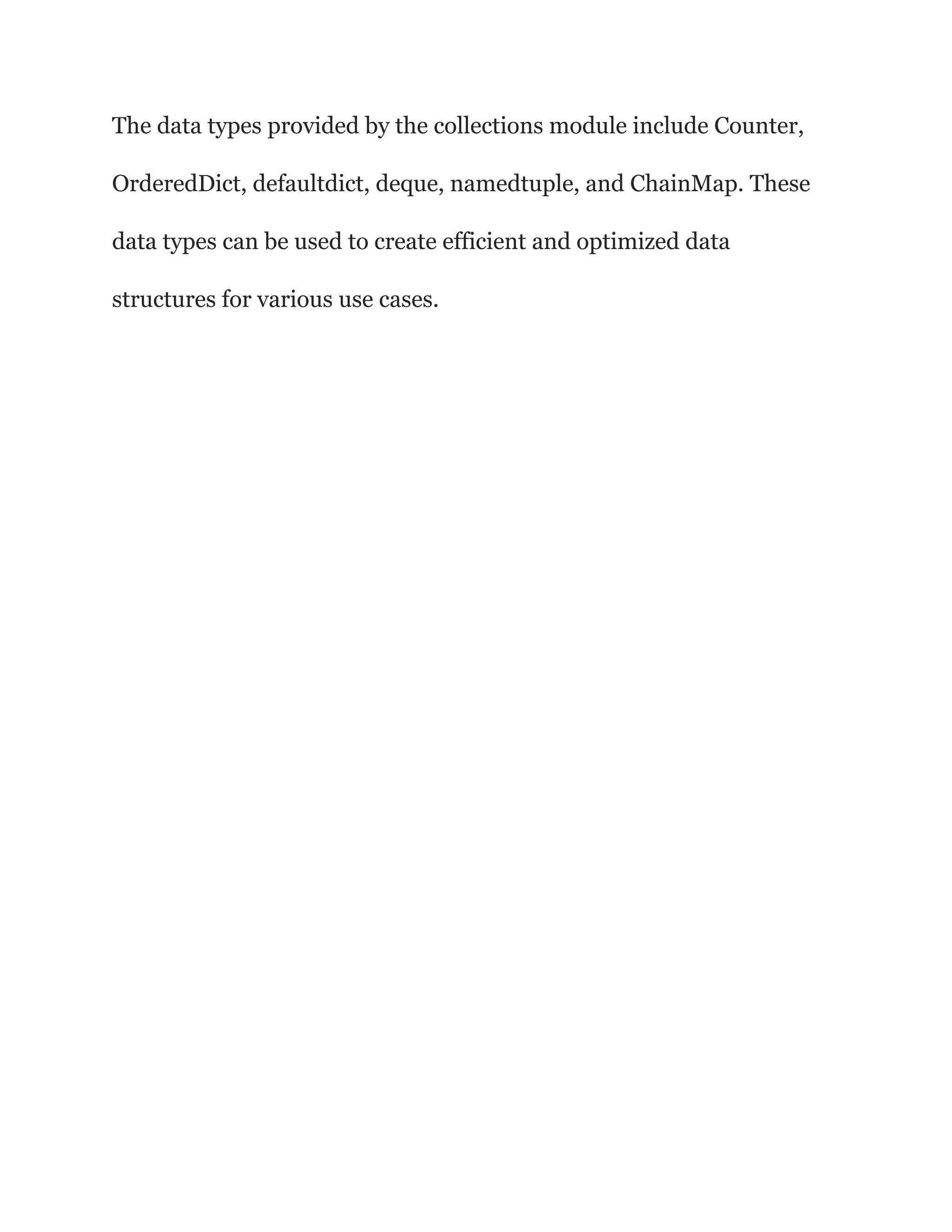The document discusses the Python collections module which provides alternative data structures to Python's built-in lists, dictionaries, and tuples. It contains optimized container types like Counter, OrderedDict, defaultdict, deque, namedtuple, and ChainMap. Each type is designed for specific use cases and provides functionality beyond the built-in structures. The document provides examples and explanations of when each collection type would be useful.
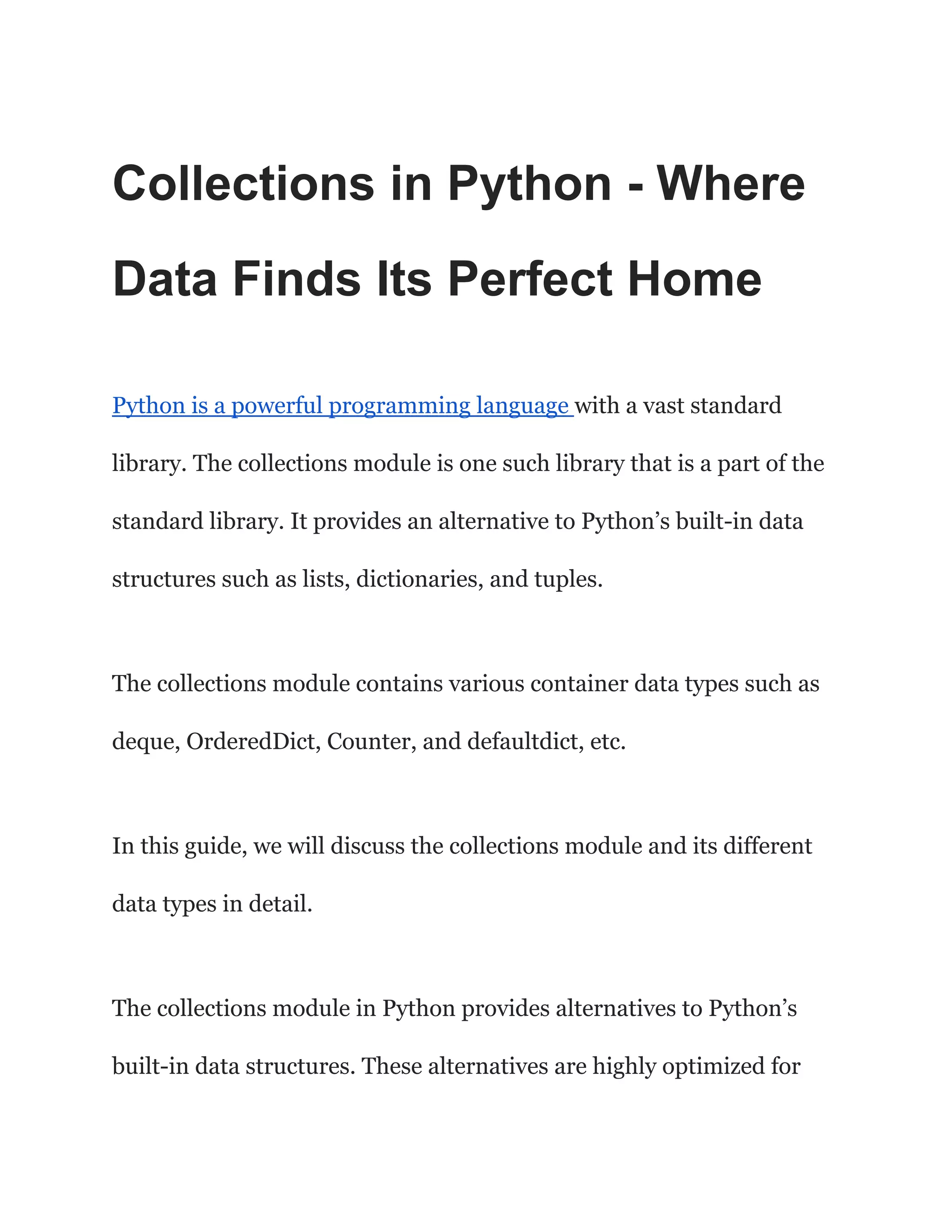
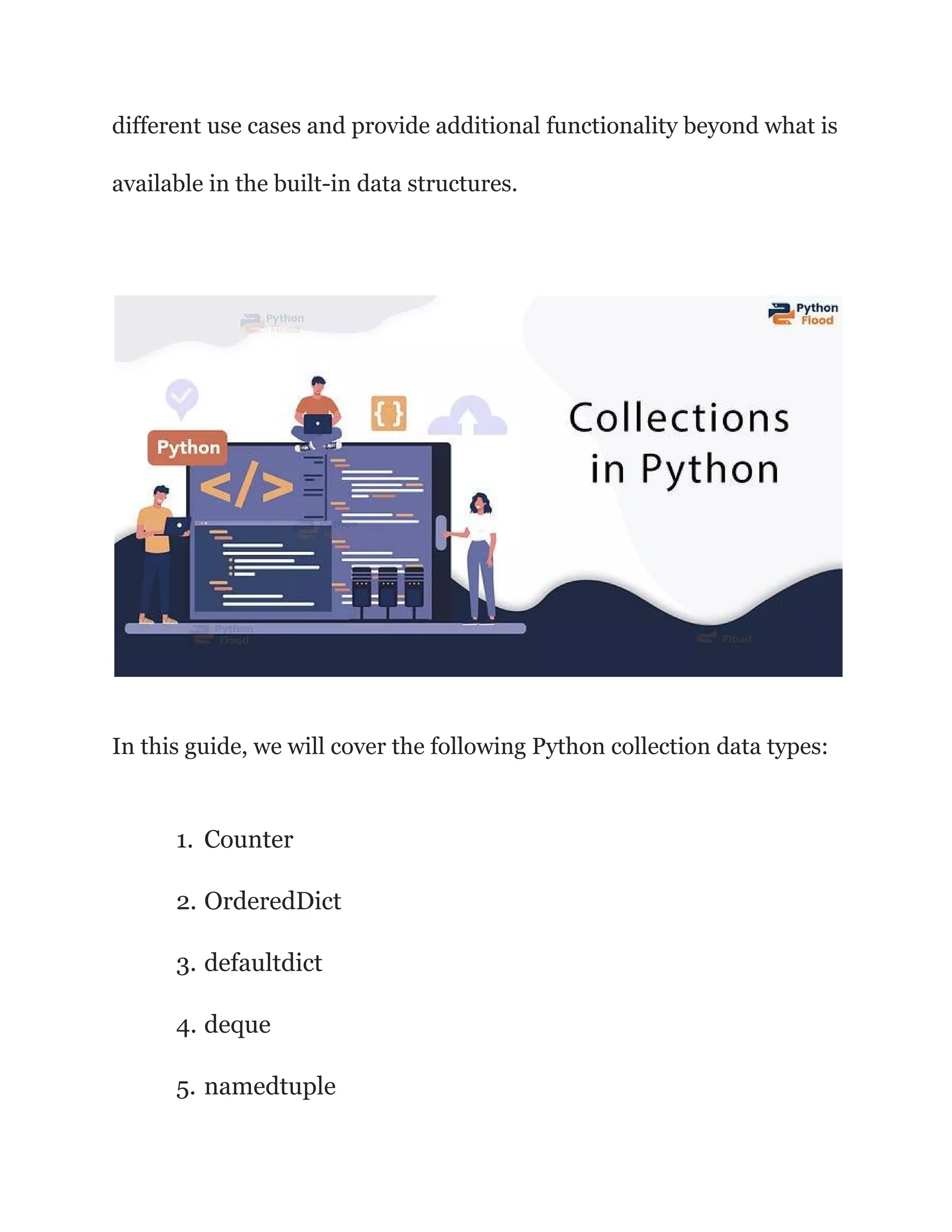
![6. ChainMap
Counter:
The Counter class is a subclass of the dictionary class. It is used to
count the occurrences of elements in an iterable. The Counter object
takes an iterable as an argument and returns a dictionary where the
keys are the elements in the iterable, and the values are the count of
occurrences of those elements.
Here’s an example:
from collections import Counter
my_list = [1, 2, 2, 3, 3, 3]
my_counter = Counter(my_list)](https://image.slidesharecdn.com/collectionsinpython-wheredatafindsitsperfecthome-230904044800-6a2f8e6b/75/Collections-in-Python-Where-Data-Finds-Its-Perfect-Home-pdf-3-2048.jpg)
![print(my_counter)
Output:
Counter({3: 3, 2: 2, 1: 1})
OrderedDict:
The OrderedDict class is a subclass of the dictionary class. It is used to
create dictionaries that remember the order in which the keys were
inserted. The order of the keys is maintained by a doubly-linked list.
Here’s an example:
from collections import OrderedDict
my_dict = OrderedDict()
my_dict['a'] = 1
my_dict['b'] = 2](https://image.slidesharecdn.com/collectionsinpython-wheredatafindsitsperfecthome-230904044800-6a2f8e6b/75/Collections-in-Python-Where-Data-Finds-Its-Perfect-Home-pdf-4-2048.jpg)
![my_dict['c'] = 3
print(my_dict)
Output:
OrderedDict([(‘a’, 1), (‘b’, 2), (‘c’, 3)])
defaultdict:
The defaultdict class is a subclass of the dictionary class. It is used to
create dictionaries with default values for keys that do not exist. The
default value is specified using a callable object that takes no
arguments and returns the default value.
Here’s an example:
from collections import defaultdict](https://image.slidesharecdn.com/collectionsinpython-wheredatafindsitsperfecthome-230904044800-6a2f8e6b/75/Collections-in-Python-Where-Data-Finds-Its-Perfect-Home-pdf-5-2048.jpg)
![my_dict = defaultdict(int)
my_dict['a'] = 1
my_dict['b'] = 2
print(my_dict['a'])
print(my_dict['c'])
Output:
1
0
deque:
The deque class is a subclass of the list class. It is used to create
double-ended queues. Deques are thread-safe and can be used for
multi-threaded applications.](https://image.slidesharecdn.com/collectionsinpython-wheredatafindsitsperfecthome-230904044800-6a2f8e6b/75/Collections-in-Python-Where-Data-Finds-Its-Perfect-Home-pdf-6-2048.jpg)
![Here’s an example:
from collections import deque
my_deque = deque([1, 2, 3])
my_deque.append(4)
my_deque.appendleft(0)
print(my_deque)
Output:
deque([0, 1, 2, 3, 4])
namedtuple:](https://image.slidesharecdn.com/collectionsinpython-wheredatafindsitsperfecthome-230904044800-6a2f8e6b/75/Collections-in-Python-Where-Data-Finds-Its-Perfect-Home-pdf-7-2048.jpg)
![The namedtuple class is used to create tuple subclasses with named
fields. Namedtuples are immutable and can be accessed using dot
notation.
Here’s an example:
from collections import namedtuple
Person = namedtuple('Person', ['name', 'age', 'gender'])
person = Person('John', 30, 'Male')
print(person.name)
print(person.age)
print(person.gender)](https://image.slidesharecdn.com/collectionsinpython-wheredatafindsitsperfecthome-230904044800-6a2f8e6b/75/Collections-in-Python-Where-Data-Finds-Its-Perfect-Home-pdf-8-2048.jpg)
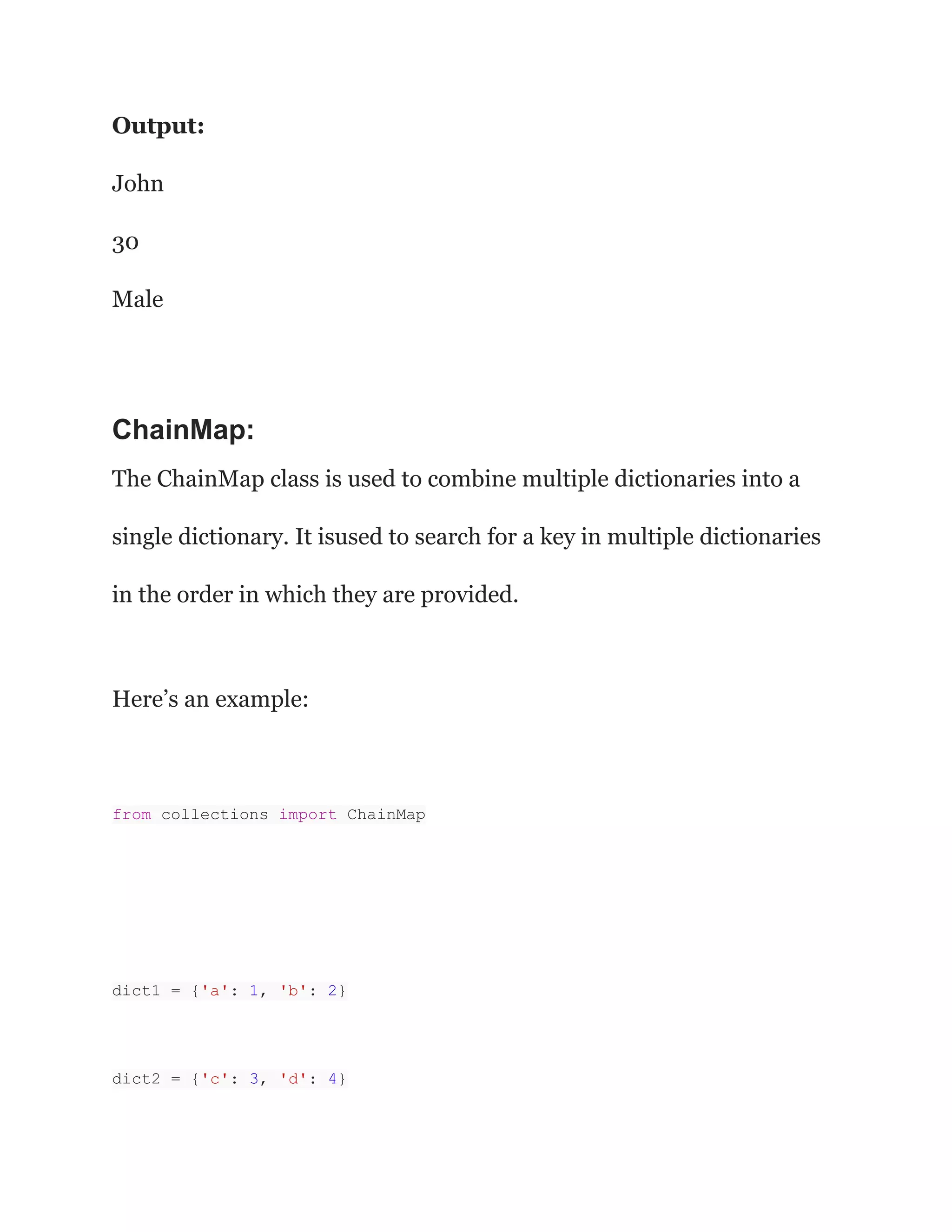
![combined_dict = ChainMap(dict1, dict2)
print(combined_dict['a'])
print(combined_dict['d'])
Output:
1
4
When to use Python Collections:
Python collections can be used in various scenarios where Python’s
built-in data structures such as lists, dictionaries, and tuples are not
efficient or optimized for the use case.
The collections module provides alternative data structures that are
highly optimized for specific use cases and provide additional
functionality beyond what is available in the built-in data structures.](https://image.slidesharecdn.com/collectionsinpython-wheredatafindsitsperfecthome-230904044800-6a2f8e6b/75/Collections-in-Python-Where-Data-Finds-Its-Perfect-Home-pdf-10-2048.jpg)
